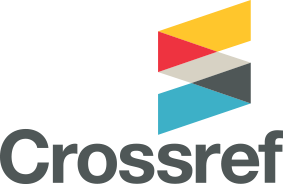SUPPLY CHAIN MANAGEMENT OF AGRO INDUSTRY OF CASSAVA
Abstract
The purpose of this study was to determine the mechanism of supply chain and the pattern of cassava of agroindustry supply chain flow and analyze the relationship between the components of SCM and the impact on supply chain activity improvement and agroindustry performance. Sample of research were producers of agroindustry local food of cassava as much of 106 respondents were taken by simple random sampling. The data analyzed by qualitative and quantitative analysis. Qualitative analysis used to describe the mechanism and pattern of cassava of agroindustry supply chain flow and principles of SCM. While quantitative analysis used to analyze the components, SCM activity improvement and agroindustry performance by using a structural equation model. The results showed that the mechanism of cassava agroindustry supply chain is the creation of collaboration and coordination among supply chain actors ranging from farmer, processor, distributor and consumer. Structural equation modeling analysis results showed the expected value to meet the criteria and are very good although AGFI marginally acceptable or good enough as an index measuring GFI (0.900), AGFI (0.860), TLI (.974), CFI (0.980), Cmin/DF (1.147 ), RMSEA (0.038), the probability (0.204) and the value of c2 (68.813).
Keywords
Full Text:
PDFReferences
Apaiah R.K., Hendrix E.M.T. (2004). Design of a supply chain network for pea-based novel protein foods, Journal of Food Engineering (available online at http://www.sciencedirect.com).
Agus A. (2011). Supply chain management, product quality and business performance. International Conference on Sociality and Economics Development IPEDR. IACSIT Press, Singapore 10: 98-102.
Arikunto S. (1998). Prosedur Penelitian, Suatu Pendekatan Praktik. PT. Bina Aksara. Jakarta.
Bagozzi R.P., Fornell C. (1982). Theoretical Concepts, Measurement and Meaning. In: Fornell C. 1982. (Eds.). A Second Generation of Multivariate Analysis. Praeger.
Bollen K. A. (1996). An Alternative two stage least squares (2SLS) estimator for latent variabel equations. Psychometrica 61: 109-121.
Brown J. G. (1994). Agroindustrial Investment and Operations. Washinton: The World Bank.
Chen I. J., Paulraj A., Lado A. A. (2004). Strategic Purchasing, Supply Management and Firm Performance. Journal Operations Management 22, pp. 505 - 523.
Chopra S., Meindl P. (2004). Supply Chain Management: Strategy, Planning, and Operation. United States of America: Pearson Prentice Hall, Inc.
D'Amours S., Montreuil B., Lefrancois. (1999). Networked Manufacturing: The Impact of Information Sharing. International Journal of Production Economics 58, pp. 63-79.
Dunne A.J. (2001). Supply chain management: Fad, Panacea or Opportunity?. Australian Agribusiness Perspectives. Paper 48.
Ghozali I. (2011). Structural Equation Models. Teori, Konsep dan Aplikasi dengan Program Amos 16.0. Edisi ke-2. Badan Penerbit Universitas Diponegoro, Semarang.
Goffin K., Marek S., New C. (1997). “Managing suppliers: when fewer can mean more,” International Journal of Physical Distribution & Logistics Management, vol. 27, no. 7. pp. 422-36.
Gunasekaran A, Patel C., McGaughey R. (2004). A framework for supply chain performance measurement. International Journal of Pr Econom 3(87): 333-48.
Lambert DM, Cooper MC, Pagh JD. (1998). Supply chain management: implementation issues and research opportunities. International Journal of Logistics Management, 9(2):1–19.
Lee H. L., So K. C., Tang C. S. (2000). “The value of information sharing in a two-level supply chain,” Management Science, vol. 46, no. 5, pp. 626-643.
Madu C.N, Kuei C. (2005). ERP and supply chain management. Fairfield, CT: Chi Publishers.
Malhotra N.K. (1996). Marketing Research. London: Prentice-Hall International, Inc.
DOI: http://dx.doi.org/10.18202/jam23026332.15.1.16
Refbacks
- There are currently no refbacks.
 Index
Index









